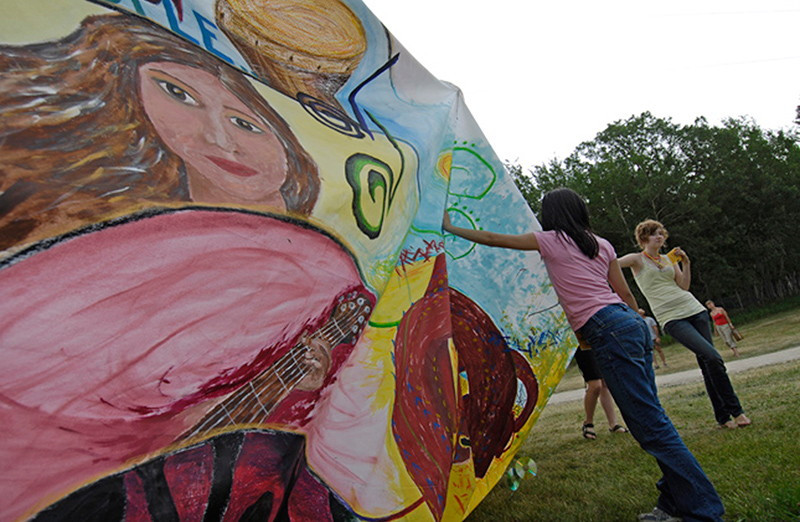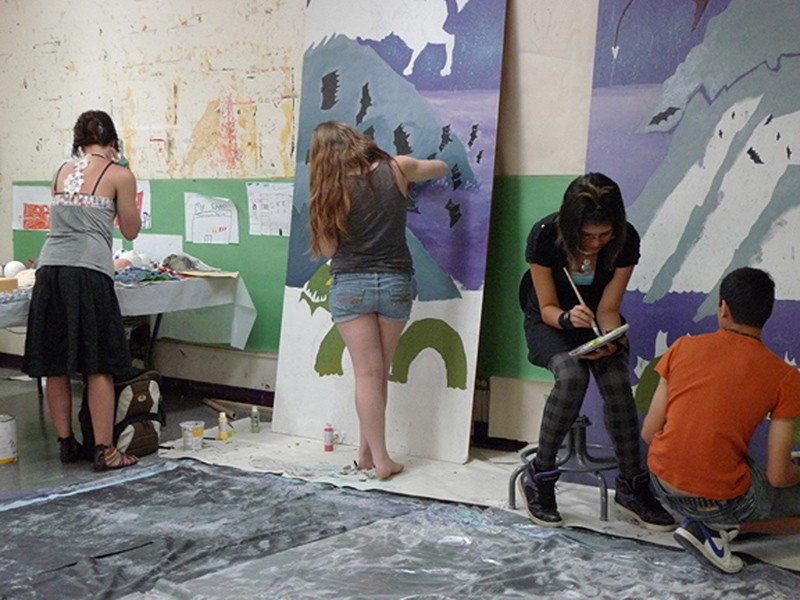Winnipeg Folk Festival cancels Young Artists Program
Esteemed visual art camp discontinued
For eight years, the Winnipeg Folk Festival’s Young Artists Program was an unparalleled experience for festival-goers, participants and organizers alike.
With each calendar year came a new and intriguing creative display made by young visual artists, and housed under a wooden canopy near the edge of the Handmade Village.
Widely recognized as an effective springboard for those looking to integrate themselves within the arts community, the YAP has been discontinued, according to a statement on the WFF website.
Margaret Koshinsky, WFF’s Marketing Communications Manager, says the program was cancelled because the festival wanted to align its programming with its mission statement.
“In terms of all programs we have here, our focus is on music, songwriting, and performance,” she says.
“The reality is that it takes a lot of resources to run a successful program,” she adds. “At the festival over the past few years, we have introduced several new educational programs centered around folk music, songwriting and performance. These types of programs fall naturally into the organization’s mission, which is to bring folk music into people’s lives.
“There are many wonderful ideas and programs that we would like to offer, and we can only focus on a few to do them properly.”
The program was a five-day camp offered each year during the week prior to the festival, in conjunction with the Winnipeg Art Gallery.
Providing roughly 40-50 young visual artists (on average about 15-19 years old) with plenty of materials, helpful volunteer mentors and studio space at the WAG, the program cost about $200 per person, which was paid by the artists themselves.
“It’s an amazing gateway to friendships with young artists and professional artists,” says filmmaker Natalie Baird, who participated and volunteered with YAP for seven years.
“(YAP) was my first experience having my work displayed publicly at such a huge event. This gave me a tremendous amount of pride and confidence in my work at a young age.”
Eryn Mackenzie, YAP’s longtime volunteer coordinator, was shocked to hear of the sudden cancellation of the program.
“There was no forewarning that the program was going to be cancelled,” Mackenzie says. “I had been on a sabbatical from volunteering in 2012, but had still worked closely with the acting coordinator to get things ready.
Mackenzie doesn’t understand eliminating a program that consistently came in under budget each year and was run almost solely by volunteers.
“In regards to it not fitting the mandate, how does the Prairie Outdoor Exhibition fit the mandate, or the Campground Animations, or the Daytime Stages backdrops, or even the Handmade Village? They enhance the site visually, which is what we did,” Mackenzie says.
“Just like music, visual art doesn’t exist in a bubble. If you look at pretty much every other similar festival around the globe, visual art and visual enhancements of the site are definitely a huge part of them.”
Koshinsky acknowledges the long standing tradition of folk art and folk music working together.
“It’s not like we’re abandoning visual art altogether, but it’s just doing fewer things well, rather than doing everything,” she says. “We love the YAP and we hate to see it go.”
Past YAP participants and coordinators have been writing letters urging the WFF to overturn their decision.
“Through the program, many YAP participants attend the festival for the first time. This was my experience, and since 2006, I haven’t missed a single year,” Baird says.
“The YAP has always been a part of my festival and volunteer experience. It is my home.”
Published in Volume 67, Number 18 of The Uniter (January 30, 2013)








